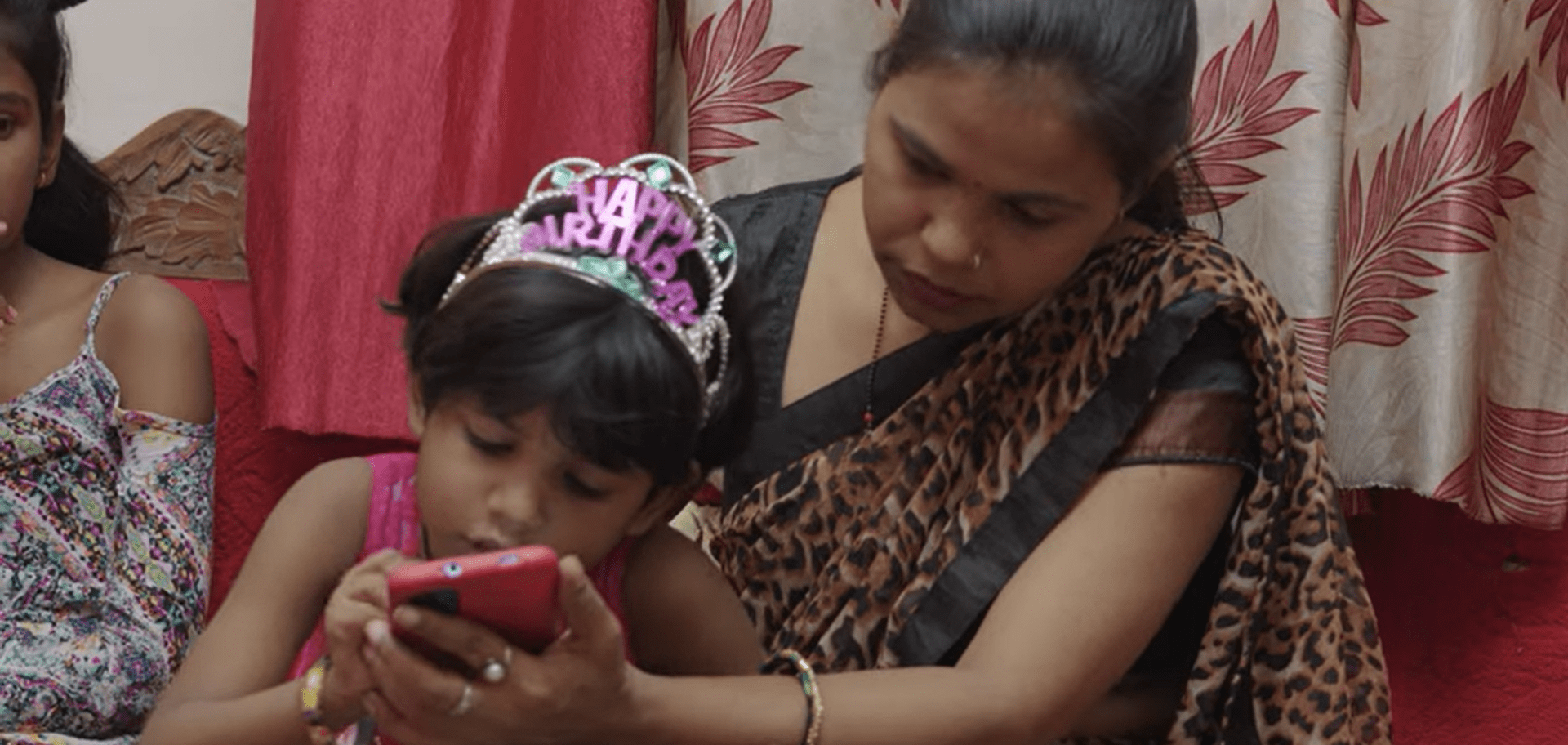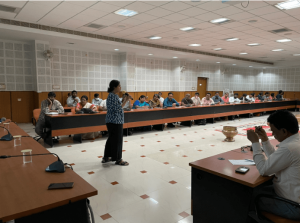The Indian EdTech sector has gone through a roller coaster ride over the last few years. While there is both excitement and scepticism associated with the Indian EdTech sector in recent times, the industry remains a vibrant space poised for innovation and growth. As per the recent Bharat Survey for EdTech (BaSE), 85% of the surveyed households reported ownership of at least one smartphone, with nearly one-third households owning more than one smartphone. As per ASER 2022, the proportion of households with smartphones has doubled from 36% in 2018 to ~75% in 2022, with many states going above 90%. In addition to this, India’s monthly data consumption stands the highest in the world at 9.8 GB. There is increasing evidence that >70% of children from low-income families spend more than 30 mins/day on their parent’s smartphones.
Despite these ecosystem-enabling factors, EdTech for low-income families remains an untapped market. Of the ~7k K-12 EdTech solutions, the majority are priced in a bracket that is unaffordable for low-income families, with content primarily in English.
Top Parent’s Journey of Innovation
Founded in 2020 by Sashwati Banerjee, a social development professional with over three decades of experience in organisational leadership, media and communication for change, Top Parent (TP) aims to address learning gaps in young children by providing essential resources for learning. Early years are crucial in children’s lives, with 90% of brain development occurring during this period, making continuous learning and proper stimulation vital. Developed through Central Square Foundation’s Entrepreneur-in-Residence programme, Top Parent leverages digital technology to enhance foundational learning at scale for the last mile.
Top Parent’s focus is rooted in equipping parents in low-income communities with the tools and resources to support their children’s learning at home in Hindi and Marathi. This was no small task, given the challenges of low literacy levels and limited access to educational materials among these families. Nevertheless, Top Parent’s innovative approach utilised multimedia content and gamification to create an engaging, effective learning environment for children. Top Parent is optimised for low literacy (with audio support); and low connectivity (using less than 3Mb storage).
Built on human-centred design, Top Parent offers intuitive, accessible and personalised accelerated learning. It integrates artificial intelligence (AI) and machine learning (ML) to create personalised learning journeys with adaptive pre-tests and continuous assessments, delivering feedback through Glific/WhatsApp to keep users engaged. Since its inception, it has reached over 950K users across Maharashtra, Uttar Pradesh, Bihar, Delhi and Madhya Pradesh, with 485K+ active users regularly engaging with content. The application has a 32% monthly retention rate and a 90% completion rate on learning activities, highlighting its effectiveness and user engagement. Its data-driven approach analyses user interactions, enabling iterative updates that respond to users’ needs and evolving educational trends.
Insights from Dr Ryan’s analysis of Top Parent’s student performance data

Top Parent won the Tools Competition in 2021 and has since been working with Dr. Ryan Baker (Director of the University of Pennsylvania’s Center for Learning Analytics and a Data Scientist with over two decades of experience in education), integrating data science and learning engineering into the TP platform.
Top Parent’s approach involved creating queries1 first, to effectively collect and make better use of the data coming out of student learning (~1500+ user events2 in Top Parent). The initial review of data indicated that a small number of exercises in each competency had unexpectedly poor performance. After these exercises were identified, the TP content team further analysed them, only to find out that they had issues such as cluttered visuals or unclear instructions or levels of difficulty that exceeded intended expectations; all of which were promptly addressed and resolved.
TP then applied the ELO3 model, an algorithm used to measure and track student performance and learning progress. By using this algorithm with ‘learning curves’ (see Figure 1), the team was able to determine which skills were easier or harder for students. This information helped improve the platform’s content (worksheets) to ensure every child received the support they needed to succeed.


Based on Dr. Ryan’s findings on the platform’s video content (both for children and for parents) being generally beneficial to student learning (see Figure 2), the TP team adjusted content to bring learning outcomes up for some of the more difficult skills.
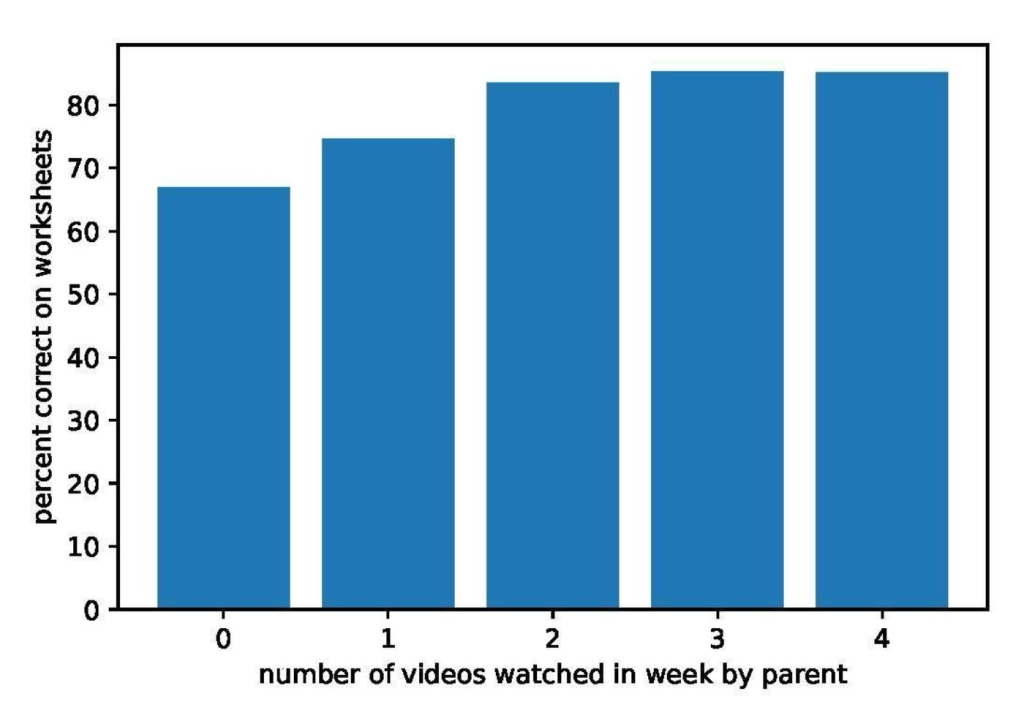

Further, Dr. Ryan supported TP in developing an adaptive pre-test (based on theory on computer-adaptive testing) to find out what students knew and did not know in each of TP’s subject areas (Math, English and Hindi) in less than 15 mins; this helped in determining the students’ subsequent learning pathway in a data-backed manner. The initial evidence from that deployment, shown in Figure 3, showed that many students needed content that was customised to their learning level, irrespective of their grade level. Therefore, the adaptive test benefitted both students above and below their respective grade levels. For students below grade level, the test prevents them from struggling with material they are not ready for. For more advanced students, it accelerates their learning process and saves them time working on material they already know.
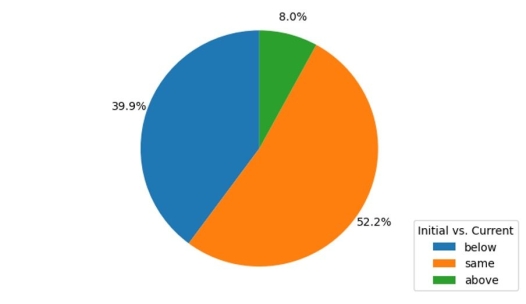
The TP team is currently integrating predictive analytics into their platform to identify students at risk of dropping off and implement a set of ten nudges based on data for the factors associated with why specific children quit the platform. In this next stage, Top Parent is aiming to use generative AI to create more personalised parent-and child-centric nudges that respond to why a specific student is at risk and provide them with recommendations that can keep them on track with learning.
Overall, these efforts show that data science can be used to improve engagement and retention on platforms like Top Parent. The eventual test of these efforts will be whether these students achieve better learning outcomes beyond the platform, surpassing the positive outcomes observed with earlier versions. Future studies are planned to investigate this further. By combining Dr. Ryan Baker’s data science expertise with the TP team’s expertise in learning, the goal is to produce better educational outcomes and eventually better life outcomes for children in low-income segments.
Looking Ahead: Top Parent’s Vision
Top Parent currently is part of the LiftEd EdTech Accelerator and has successfully implemented key features like an AI chatbot and live streaming, resulting in improved engagement by almost 40% in six months.
TP3.0 Snapshot: Live Streaming Feature (Blended Learning & Spoken English sessions)
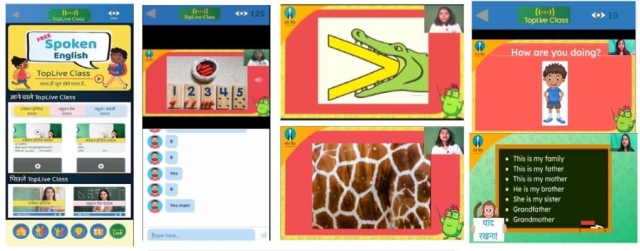
Looking ahead, the focus will remain on sustaining this progress and scaling the impact on children’s foundational literacy and numeracy (FLN). The goal is to enhance the product with new features such as virtual avatars and conversationality that integrate Gen AI and Large Language Models (LLMs), as well as to re-design the curriculum to be more adaptive. Additionally, Top Parent plans to expand their offerings and explore new ways to raise funds to support their growth and business needs. With these strategies in place, Top Parent is poised to continue driving positive outcomes for education in India.
Top Parent is a FREE resource to serve communities that need it the most. The Top Parent App is available for download on the Google Play Store. Click here to download.
Top Parent is a part of the LiftEd EdTech Accelerator portfolio. The Accelerator is supported by the Michael and Susan Dell Foundation, Reliance Foundation, UBS Optimus Foundation, and USAID as Founding Partners, the British Asian Trust as the Programme Leader, and Central Square Foundation as the Design and Technical Partner. Learn more here.
